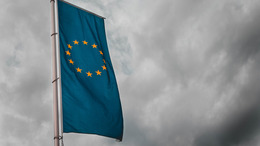The green and digital transition will fundamentally change the economies of European regions. However, these regions are prepared very differently for these opportunities and challenges. While the opportunities predominate for regions that are already economically strong today, weaker regions face additional challenges. Overall, already existing economic imbalances in Europe will be further exacerbated in the course of the twin transition. This is the conclusion of our study on the future of cohesion in Europe.
For Europe, the study paints a three-part picture. Southern European regions in the south of Italy, Spain and Portugal, which have already stagnated economically in recent years, will see their future economic potential further limited by the twin transition. The same applies to Eastern European regions in Bulgaria, Poland and Romania on the EU's external borders, which have been able to catch up strongly in recent years, but which face major challenges, particularly from the green transition. The situation in Western and Northern Europe is different. Europe's already most prosperous regions in Germany, Austria, the Netherlands and northern Italy have the best prospects of benefiting from the twin transition.
"Our findings show that the twin transition will exacerbate polarization between regions in Europe," explains our Europe expert Thomas Schwab. "The different growth prospects will become more acute, especially for Southern and Eastern Europe."










